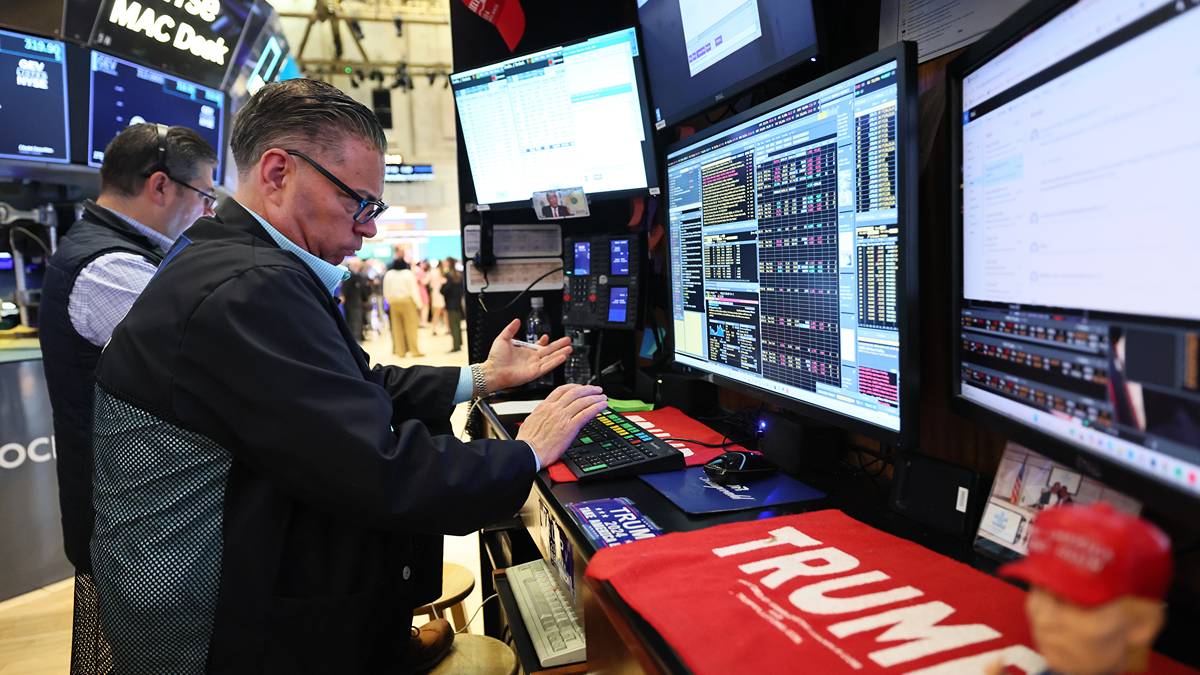Investors could face a decade of low sharemarket returns

Is it really all about time in the market? Pic: Getty Images
With US President Donald Trump’s almost bipolar approach to domestic and foreign policy as America drifts to authoritarianism, investors in gold and bitcoin are demonstrating a belief that the US dollar and American exceptionalism are simultaneously being undermined.
Advisers globally, however, have the majority of their clients vastly underweight these assets in portfolios that continue to be highly exposed to stocks, and in particular, the S&P 500, which is an index whose sneeze causes everyone to catch a cold.
The argument is that over the long run, the S&P 500 is essentially risk free – it always goes up. They admit there will be bouts of volatility and brief periods when the market declines, even precipitously, but as one extends the investment horizon, the frequency of negative experiences declines.
And they are right. The longer the time horizon, the more likely the returns will turn positive. Measured over all one-year periods, the S&P 500 delivers a positive return about 67% of the time. Over any three year period, the S&P 500 delivers a positive return about 88% of the time, and over 10-year periods almost 100% of periods are positive. It’s these statistics that support the old aphorism, “it’s time in the market, not timing the market, that matters”.
But I can tell you time is the friend only of a quality business. Stay invested over a long time in a rubbish business and your returns will turn worse not better. Time is the enemy of a poor-quality company. And the same is true of index returns. Time is a better friend of those who invest when others are fearful. Time is not such a great friend if you invest when everyone is greedy and optimistic. Put another way, you want to invest when the risk seems highest.
Let me explain.
The S&P 500 might rise and as it does, so does the multiple of earnings it trades at. When investors are optimistic and the S&P 500 is at all-time highs, the multiple of earnings investors are willing to pay can be much higher than when prices are low and investors seem despondent, or even depressed. The ratio of price to earnings is also known as the PE ratio. Think of it this way; if the PE ratio is 35 times the current earnings, it means an investor buying a share today will be paid back for their purchase in 35 years if the earnings remain unchanged.
If the PE ratio is, say, five times earnings, the investor will be paid back in just five years. Typically, companies whose earnings are growing fastest, and those whose earnings are expected to grow for a long time, have the highest PE ratios. Generally, you can’t buy a high quality and fast-growing company on a low PE ratio. But that dream sometimes comes true when investors panic sell and the market crashes.
And that’s where great returns are made. You see, assuming a quality and growing company, the price you pay determines your return. The higher the price you pay, the lower your return. And the lower the price you pay the higher your return.
The highest returns occur when quality is bought on the cheap. And that opportunity tends to present itself when risk seems highest. In other words, the highest returns accrue to those who invest when risk seems the worst but isn’t.
Your 10-year returns are likely to be positive, but they can be low or high depending on the price you pay when you invest. Despite the statistics, even a decade-long investment journey can test an investor’s patience. Consider the period from early 2000 to the close of 2011, when the S&P 500, even with dividends reinvested, essentially flatlined. For 12 long years, portfolios stagnated, delivering no meaningful gains. To those enduring it, the market would have felt anything but risk free. Such prolonged periods of underperformance are rare but they’re not unheard of.
Over the past century, 10-year rolling returns in the stock market have been positive 95% of the time, boasting a median gain of 175%. Still, history reveals exceptions, such as the 1930s, 1970s, and 2000s, when decade-long returns faltered, leaving investors treading water.
And that’s why paying a high price even for an index that is perceived as safe over the long-term changes the risk. Right now, with Trump undermining the US dollar’s status as the reserve currency, through tariffs and trade restrictions, and with his shift away from democracy and co-operation undermining US exceptionalism, the high PE ratio for the S&P 500 today seems out of place.
History suggests investors will receive a lower return over the next 10 years if they pay today’s near-record PE ratio. Meanwhile, Trump’s mercantile approach to foreign relations suggests heightened volatility in public markets is almost certain.
So, does a volatile and middling return sound like something you should be buying into? I am increasingly concluding that earlier gold and bitcoin investors might be right. But don’t jump on those either. Remember, the higher the price you pay, the lower your return. That applies to gold and Bitcoin, which are both at, or near, record highs.
So where do you turn for diversification? Well, for Australian investors I reckon our private credit funds could be the way to go.
With monthly cash income, a highly attractive return, and with a track record of no negative months, our investors are increasingly seeing the merit of diversifying a little away from public markets.
No one can predict when the next extended downturn will strike. Market cycles may have quickened, leading to sharper and shorter declines, or perhaps that’s just optimism clouding judgment. A complacency born of recent stability, the so-called Minsky mindset, could however make a prolonged crisis more likely, catching investors off guard.
And buying now, at near record highs, is almost certain to produce a middling return, even over 10 years. Preparing for uncertainty is the key.
Stress testing your portfolio to understand its vulnerabilities can help you brace for whatever the market might throw your way. And while extending one’s investment horizon is a powerful tool, it doesn’t erase risk entirely. That’s why I believe private credit could be the solution to Trump.
Roger Montgomery is founder and CIO at Montgomery Investment Management.
Related Topics
UNLOCK INSIGHTS
Discover the untold stories of emerging ASX stocks.
Daily news and expert analysis, it's free to subscribe.
By proceeding, you confirm you understand that we handle personal information in accordance with our Privacy Policy.








